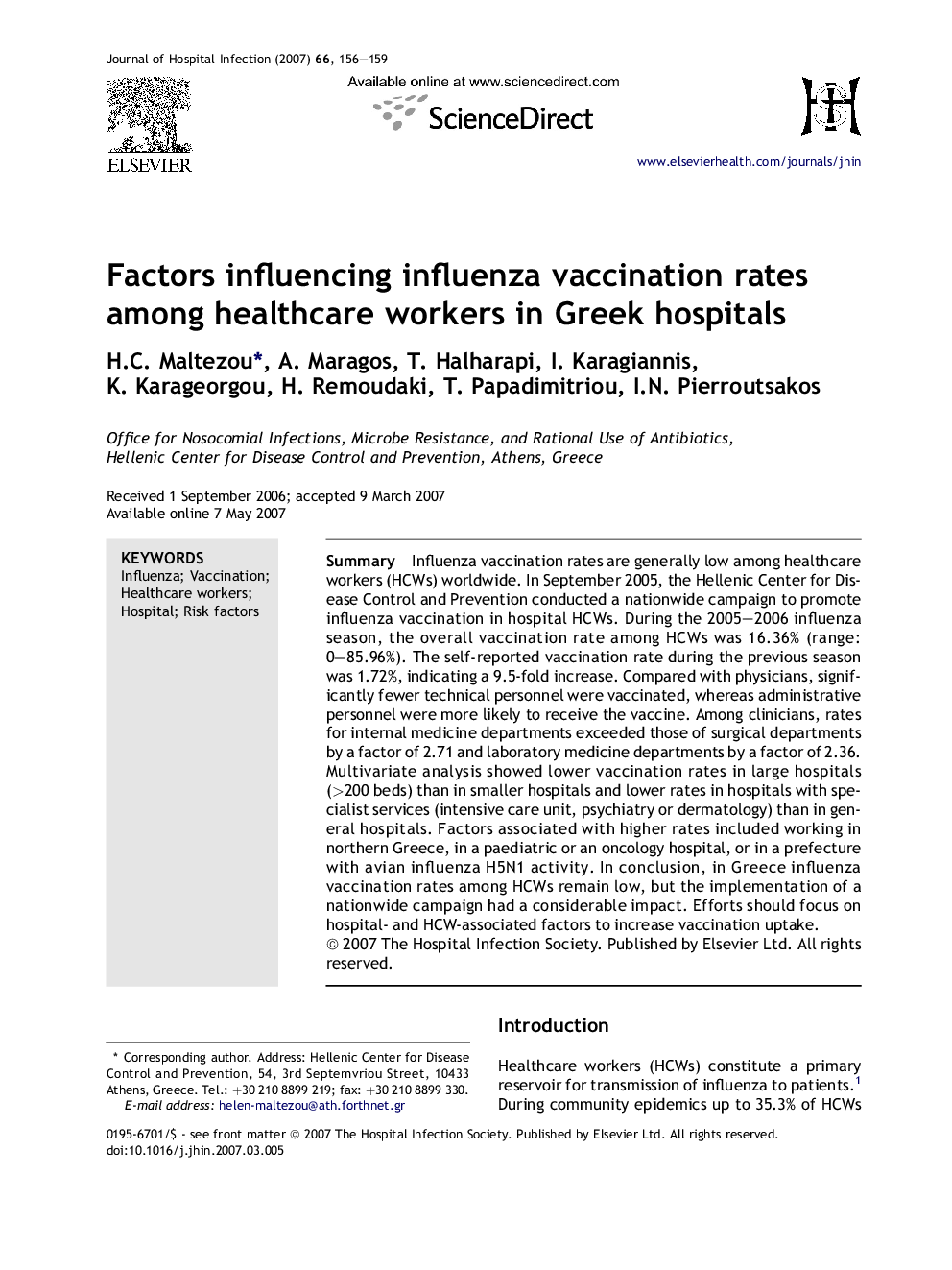| Article ID | Journal | Published Year | Pages | File Type |
|---|---|---|---|---|
| 3373631 | Journal of Hospital Infection | 2007 | 4 Pages |
SummaryInfluenza vaccination rates are generally low among healthcare workers (HCWs) worldwide. In September 2005, the Hellenic Center for Disease Control and Prevention conducted a nationwide campaign to promote influenza vaccination in hospital HCWs. During the 2005–2006 influenza season, the overall vaccination rate among HCWs was 16.36% (range: 0–85.96%). The self-reported vaccination rate during the previous season was 1.72%, indicating a 9.5-fold increase. Compared with physicians, significantly fewer technical personnel were vaccinated, whereas administrative personnel were more likely to receive the vaccine. Among clinicians, rates for internal medicine departments exceeded those of surgical departments by a factor of 2.71 and laboratory medicine departments by a factor of 2.36. Multivariate analysis showed lower vaccination rates in large hospitals (>200 beds) than in smaller hospitals and lower rates in hospitals with specialist services (intensive care unit, psychiatry or dermatology) than in general hospitals. Factors associated with higher rates included working in northern Greece, in a paediatric or an oncology hospital, or in a prefecture with avian influenza H5N1 activity. In conclusion, in Greece influenza vaccination rates among HCWs remain low, but the implementation of a nationwide campaign had a considerable impact. Efforts should focus on hospital- and HCW-associated factors to increase vaccination uptake.
